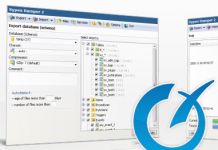In the digital age increasing rapidly, the number of e-commerce websites with large storage needs is increasing with Cloud VPS service – an outstanding hosting service characterized by “Self-managed”. However, not all businesses know how to manage and optimize best the performance of VPS in the process of using.
Here are five ways to optimize your Cloud VPS performance
1. Optimize Cloud VPS starting at Apache configuration
To optimize your Cloud VPS, you should start looking at your Apache configuration. Low configurations can cause Apache to not use all the resources of the server, and this can affect all other processes that you request your server to perform. This is especially true with Cloud VPS.
If you only install and maintain Apache’s main functions and components and leave out the lesser-known parts, you can improve the performance of your Cloud VPS server. Disabling some of Apache’s unnecessary functions also increases the download speed and enhances the overall performance of the platform.
You can improve server performance by adjusting the settings of StartServers, KeepAlive, MaxClients, StartServers and MaxRequestsPerChild. Here are the settings that you can make reference to optimize your Cloud VPS
StartServers
This index sets the number of sub-server processes that are created at startup and the value should reflect what is set in MinSpareServers. StartServers value for VPS is 5.
KeepAlive
As a server-to-server link structure with the ability to reduce the number of requests and increase the speed of your website, this is a good way to reduce your use of resources and speed up your website at the same time.
KeepAlive should be ‘Enabled’ unless the server is receiving a large amount of requests from IPs at the same time.
The load balancer server and/or the expansion server need to turn off this setting to increase the amount of connections.
MaxKeepAliveRequest should be set to 100 when using VPS
KeepAliveTimeout: recommends this value should be reduced to 5 when using VPS.
MaxClients
This index limits the number of concurrent requests that will be served. Any connection attempt that exceeds this limit is expected. The recommended limit for MaxClients with VPS is 150.
MaxRequestsPerChild
This index limits the number of requests that an individual child process process will handle. For VPS, this limit we recommend to leave 300.
2. Keep your MySQL version up to date
This is essential to ensure your VPS remains high performance while still ensuring safety.
Versions 5.1 and below are no longer supported. For best results, it is recommended to use versions 5.6 or 5.7, with 5.7 being the most advanced version for both read and write workloads.
3. Content cache
Caching is another way to improve the performance of your VPS. Continuously requesting static files can cause VPS to operate heavily and slowly; However, by saving to RAM, you can speed up the process and reduce latency through the temporary storage of data that users frequently use.
4. Optimize content in Cloud VPS
There are many ways that your content can be optimized to be distributed more effectively. The best way to find the most suitable action for your content is to use one of many free online tools, analyze web pages looking for issues, and suggest improvements. PageSpeed and WebPageTest. Both of these tools will give you accurate and detailed speed and performance as well as indicate where your content and server can be optimized better.
5. Use CDN
The slower the distance from the location you place the server to the visitor’s location, the slower the page load time will be. A content distribution network (CDN) is a paid service that stores your static content on different servers in different geographic locations across the globe, so when someone requests data, data Static data will be sent from the nearest location. This helps the content to be distributed more quickly and the web pages load faster. Also, by freeing up the workload that your server needs to do, your server can perform better other services.
From this article, I hope to help you better understand the steps you can take to make your VPS server run faster and more efficiently. It includes improved Apache configuration, MySQL updates, cache, content optimization, and content delivery networks are all ways you can improve your load time and help your visitors to have a better user experience.











